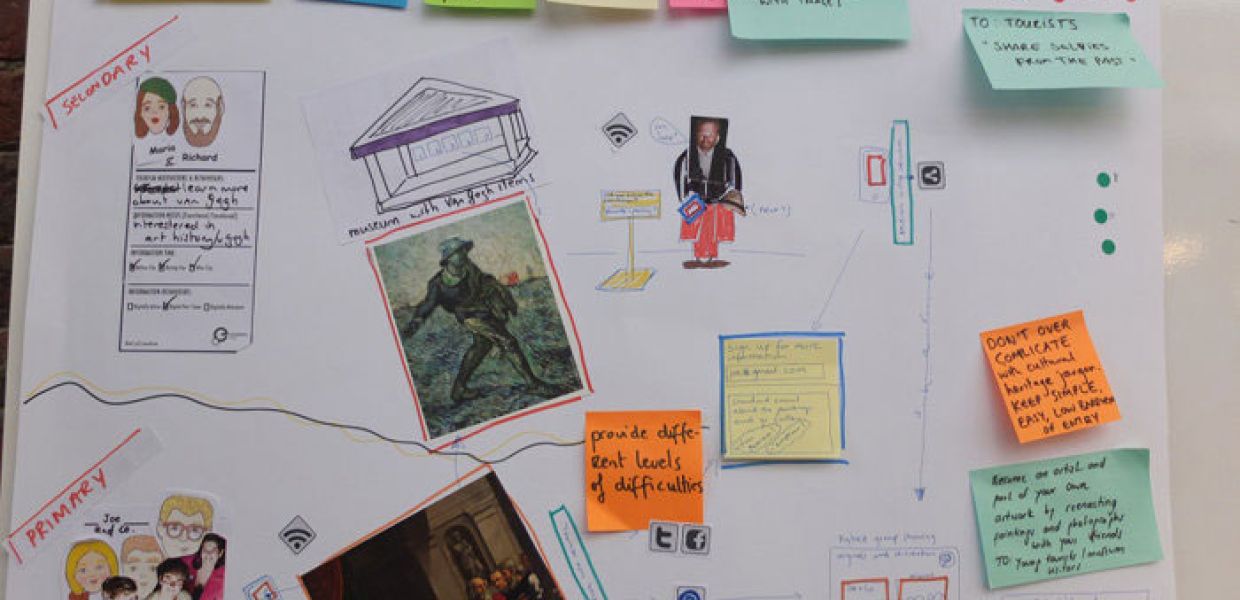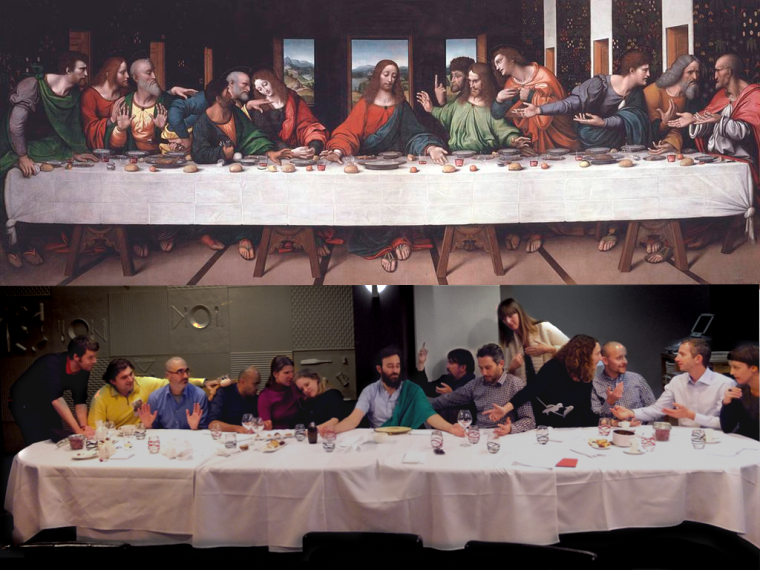Tired of just looking at paintings?

The Europeana Creative team are developing a genuinely different and surprisingly deep way for tourists to engage with heritage, based on emotion, playfulness and curiosity.
Recreate a painting with your friends, then upload and share your photograph, twinned with the original, for others to enjoy. Decide how ambitious you feel, then choose to recreate an easy, medium or hard painting from a selection of classics.
The service will be used by tourism offices, museums, cities, tour guides, etc. to promote specific destinations, sites and events. After all, the tourism sector seeks to provide visitors with great experiences in order to get them to return to a destination or to tell friends and family about it in a positive way.
This pilot scheme could help to provide that experience. It can easily be integrated into existing marketing schemes and is very "light-weight" in terms of costs and management.
The service will be free and very simple to use. The website helps you to choose a painting to recreate. Once you have taken your picture, it is twinned with the original. You can also then share it through your own existing digital channels such as Facebook, Twitter, Pinterest, Tumblr, etc.
This is something visitors and tourists can do together, as friends or as a family, and can then share with more people online. It's inherently sociable and playful – and everyone loves an interesting or amusing photo!
The B2B Targets
The main targets for the use of the tourism pilot prototype are:
-
Tourist offices or public tourist bodies (from local to national / cross-border)
-
Museums and other content providers or cultural venues
The idea could be used to directly engage visitors in fun ways with cultural assets of the destination, generating interest as well as connecting them with art-historical themes and information in a deeper way.
The B2C Targets
The end user – or client – for the service will be a tourist or visitor who is digitally active. It is aimed at a wide group of tourists who may want to engage with paintings, images and photos, but don’t simply want to look and learn in very formalistic ways: because they are not interested in it or because they already know a lot about a destination.
The idea taps into a key emotional desire for fun and sociability. It both triggers and is based on natural curiosity.
This idea could be used:
-
To engage tourists in paintings relating to a specific destination.
-
To re-experience historical events that happened at a specific place.
-
To create tangible and extraordinary souvenirs and memories of the trip.
-
To support the creation of additional memories after the trip, for example, recreate images that have been discovered during the trip with the family.
Specific targets could be:
-
Young audiences (children, teenagers, school classes)
-
Families
-
Niche audiences with a very deep and specific interest in a destination, i. e., WW1, gardening, art nouveau, etc.
-
City breakers and tourists with a relatively shallow interest in cultural content
-
Tourist groups (recreating a painting instead of the "usual memory shot" in front of the bus)
Potential users would be attracted via marketing campaigns of the B2B partners of the project, i. e., tourist boards, museums, cities, etc., or social sharing that uses previously created recreations of paintings as the key promotional images.
The website can be used on any device (computer or mobile) and anywhere – with an Internet connection. The website will guide the user through the process in a simple four-step approach:
- Select the painting/image you want to recreate.
- Take a picture with your camera of your re-enactment or upload the image of a re-enactment that you've already prepared.
- Twin and adjust the photo with the original image/painting.
- Share it with your friends and family (mail, FB, Twitter, Tumblr, Pinterest, etc.).
The Scenario
The working title of the tourism pilot is "VanGo(gh)Yourself". The working title was inspired by the Van Gogh exhibition in Mons and the popular "ElfYourself" application.
The scenario was chosen as the most promising scenario for a prototype because it will allow the pilot partners to focus on the development of a curation tool that enables the easy selection and integration of objects from Europeana in new applications where they would be contextualised, geolocalised or just simply re-used and displayed in new ways.
The need for such a tool was at the centre of every single scenario developed by the participants of the Europeana Creative Tourism Co-Creation Workshops in Verdun and Mons (November 25–27, 2013).

Initial collaborative diagram of the VanGoghYourself pilot scenario during the workshop in Mons
The simplicity of the concept is ideal for the test and promotion phase of the prototype, because the front-end development will be kept relatively light-weight due to the use of existing platforms and a very simple overall concept: select a painting, take a photo, pair it with the painting, publish it.
And finally: We have chosen "VanGo(gh)Yourself" because it is a genuinely different and surprisingly deep way to engage with heritage, based on emotion, playfulness and curiosity. It is something creative and innovative that also leaves a lot of room for improvement for the future open innovation challenge phase where more complex scenarios can be explored.

The Europeana Creative tourism pilot team recreating the Last Supper in a restaurant in Mons. Great fun!
